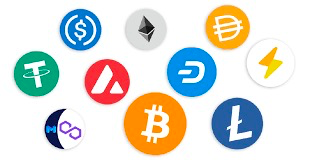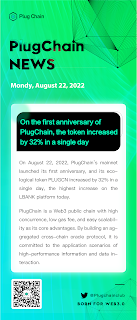Unlocking the Power of Public Blockchains: How PlugChain Outpaces the Competition on Curves?
Introduction: Throughout the Web3 domain, public blockchains have always been the most crucial infrastructure and one of the most fiercely competitive battlegrounds in the industry. When discussing the development of public chains in the past, we often pondered over who would be the true “Ethereum killer” or who could become the next “Ethereum.”
Undoubtedly, Ethereum has wielded absolute power in the public blockchain race, thanks to the ecosystem barriers formed by developers and users. However, the disappearance of numerous “Ethereum killers” made us realize that if public chains continue to confine themselves to the same development paradigm as Ethereum and merely follow in its footsteps, they will never be able to shake Ethereum’s iron throne.
As the most crucial infrastructure in the Web3 domain and one of the most fiercely competitive battlegrounds in the industry, is there still an opportunity for new public chains amidst the intense competition?
Upon observing the current landscape of public chains, we can see that Ethereum continues to lead the race, but new public chains are no longer solely focused on toppling Ethereum.

Some of them choose to rely on the Ethereum ecosystem and work hand in hand to address Ethereum’s scalability issues. Others leverage groundbreaking or disruptive technological advantages to attract Ethereum users and traffic by solving the “blockchain trilemma.” Some opt to focus on specific application ecosystems, drawing mainstream users to participate. These innovations have brought fresh vitality to the field of public blockchains.
Taking PlugChain as an example, after two years of deep cultivation as a public blockchain, it has achieved a perfect combination of decentralized oracle and cross-chain capabilities. On one hand, PlugChain establishes an efficient and secure decentralized data network, where each oracle serves as a node in the network. Its architecture consists of on-chain and off-chain components. The on-chain components handle user interactions, collect and respond to user requests, while the off-chain components constitute the aforementioned data network, responsible for data retrieval and transmission, significantly improving on-chain data processing efficiency.
On the other hand, PlugChain has built a high-performance cross-chain architecture, enabling it to support cross-chain Swap functionality, which is relatively simple and secure to implement. It can directly connect multiple exchange APIs within hosted accounts, achieving millisecond-level quotes without relying on external oracles with certain price delays, thereby filling the real-time cross-chain gap in the market. Moreover, PlugChain efficiently facilitates information exchange among various independent blockchains, similar to Cosmos, and it can also provide modular underlying components through nesting popular public chains like BSC, Heco, Solana, and Cosmos, supporting globally viable enterprise-level application networks.
Additionally, PlugChain’s on-chain AI system plays a crucial role within its oracle network. By utilizing AI algorithms and data analysis techniques, PlugChain can execute smart contracts automatically and predict and analyze data and market trends. These predictions and analyses can be transformed into real-time market data, supporting various applications and services within the PlugChain ecosystem. For instance, AI technology can be utilized to establish automated trading strategies and trading bots, offering users efficient trading and investment support.
In the future, PlugChain will take Web3.0 traffic as its entry point and achieve data input and output, as well as data governance, through cross-chain protocols, smart contracts, big data, and AI technology. This data will be transmitted to over 100 mainstream public blockchains worldwide via the ONP (Oracle Network Protocol), creating a bridge between the Web2 world and the Web3 world. Continuously expanding various DApps, it will start by serving top-quality global DeFi projects and establish a diverse application ecosystem covering various domains such as DeFi, NFT, GameFi, SocialFi, ultimately forming the PlugChain Web3.0 application system.
Conclusion: With the advancement of technology, the public blockchain race seems to be moving from “single-chain dominance” to “multiple chains thriving.” In this diversified landscape, emerging or developing new public blockchains have the space and potential to continue expanding in the public chain race. Perhaps these new public chains will flourish through mutual empowerment between technological development and ecosystem prosperity.
PlugChain takes the aggregated cross-chain oracle protocol as the core, integrates the advantages of high performance, high expansion, low gas!
Website: https://plugchain.io
Twitter: https://twitter.com/Plugchainclub @Plugchainclub
Telegram: https://t.me/plugchain
Discord: https://discord.gg/GdpPzUt89E
Youtube: https://www.youtube.com/channel/UCW4s0YFA7y1qYis1eW3Wcog
Medium: https://officialplugchain.medium.com/
NFT Market:https://very5.com/
GitHub:https://github.com/oracleNetworkProtocol/plugchain
Official Email:officialplugchain@gmail.com
#PlugChain #Pando #Very5 #Gxswap #Oracle #prc20 #web3



Comments
Post a Comment